Buffalo Bones deck
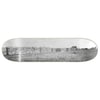
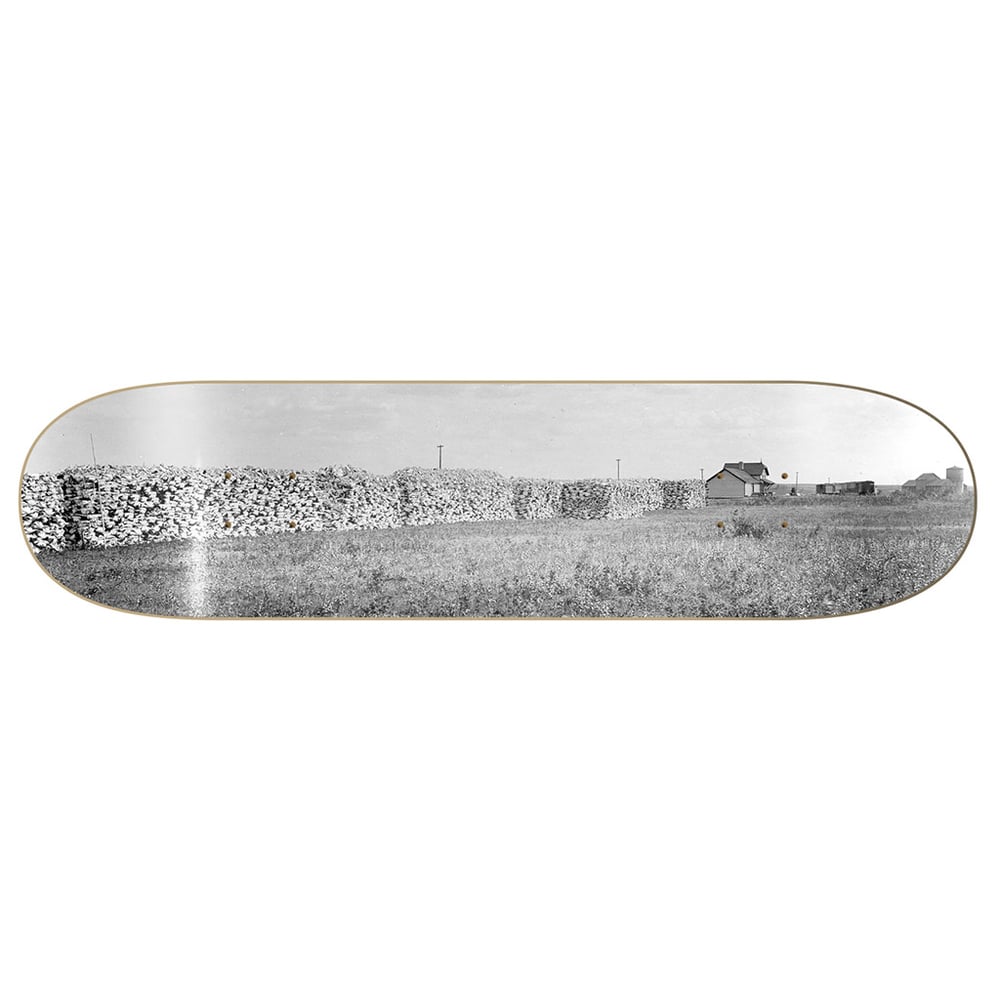
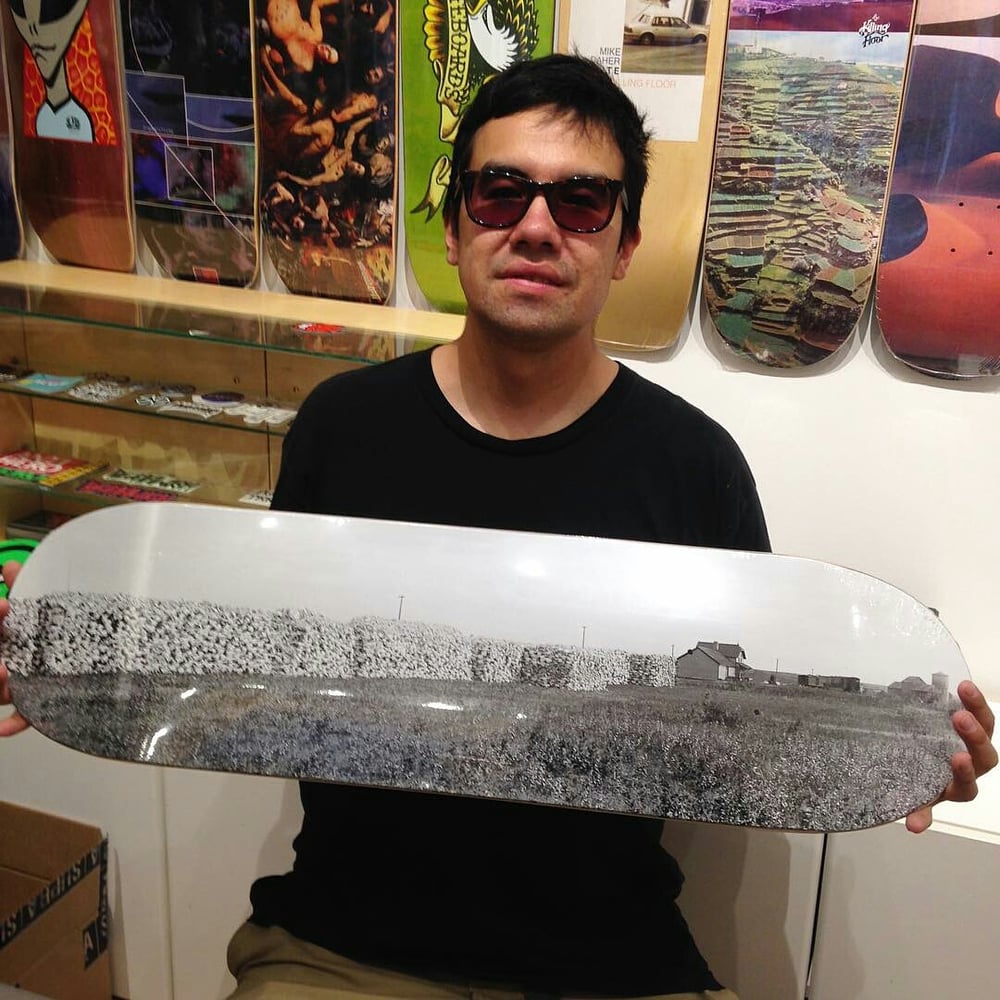
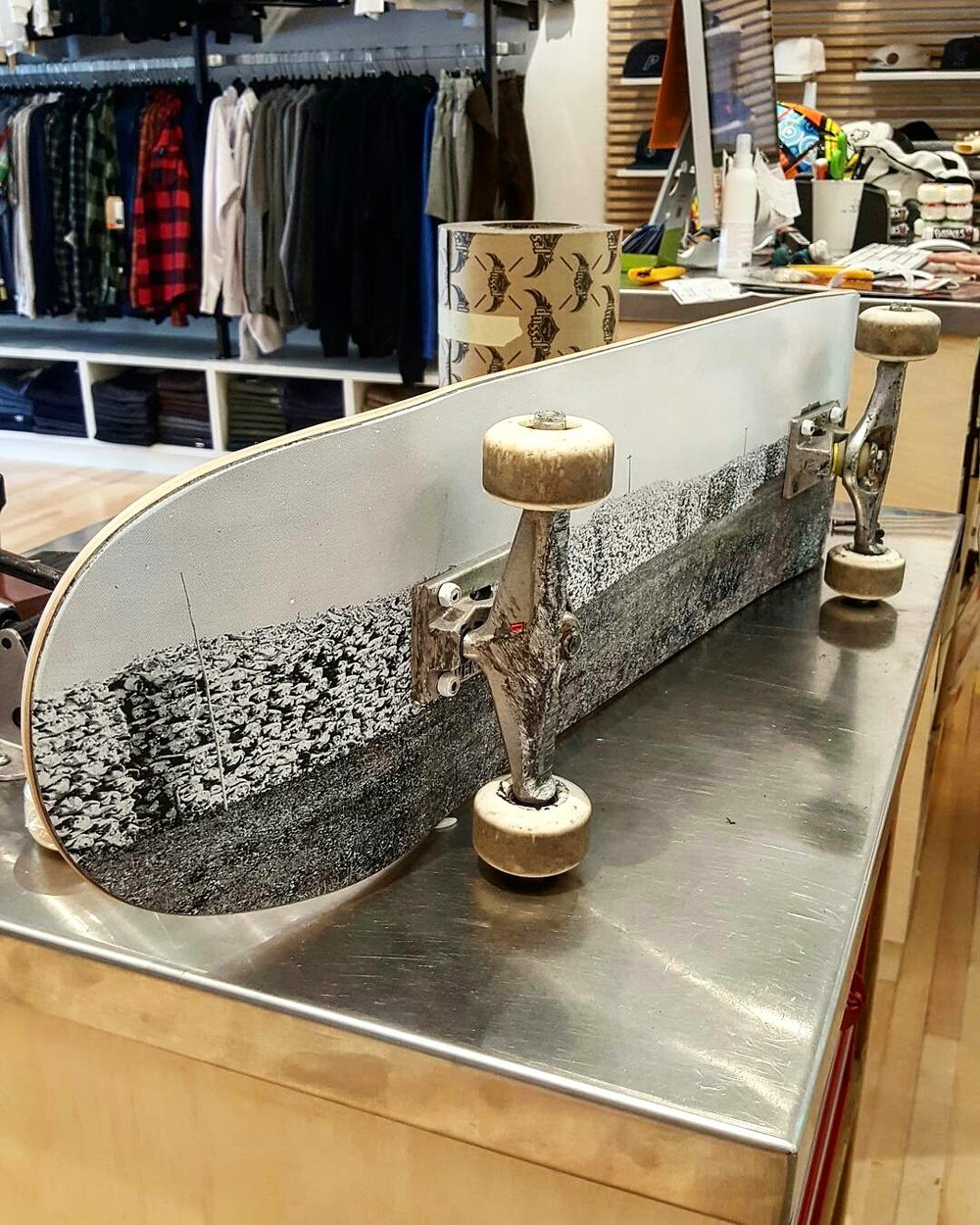
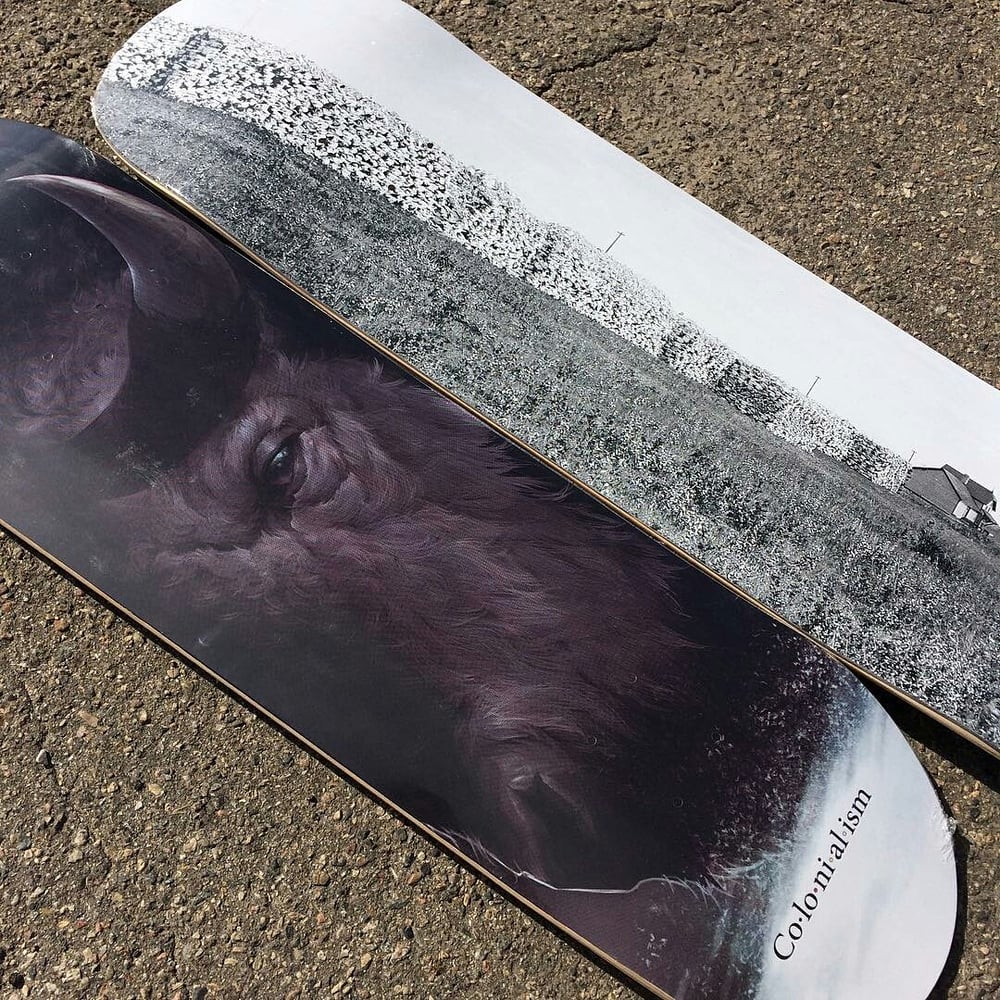

The third graphic from Colonialism Skateboards explores the mass extermination and near extinction of the plains bison (or buffalo) – a fundamental consequence of colonization in North America, and particularly Canada. Prior to (and even after) the arrival of European settlers, Aboriginal peoples largely subsisted on the bison, hunting them on foot with the use of spears and other handmade weapons. Aboriginal peoples depended on this valuable resource for their way of life, and the bison evolved into an integral part of their culture. There were more than 120 uses for the bison and virtually every part of the animal, including the bones, were used. As generations passed, Aboriginal peoples mastered their techniques, eventually killing mass quantities of bison in a single hunt while still maintaining healthy bison populations. This was the case with the ‘buffalo jump’, a communal practice through hunters would drive a herd of bison over a cliff, breaking their limbs and making them immobile (if not outright killing them), and immediately finish the hunt using their handmade weapons. This strategy was used for generations before European newcomers introduced hunting aids of their own – the consequences of which would prove to be disastrous.
The increasing incursion of European fur traders into 18th century North America significantly imposed upward pressure on the demand for bison. As an economy developed for, what was then, the foundation of plains subsistence, horses and firearms were introduced into the hunting formula. Horses afforded hunters the luxury of quick and efficient mobility, while firearms made the practice of killing game a much easier task. It was not long before the bison hunt had manifested itself at an industrial scale, far outstripping local demand and the ability of bison herds to achieve replacement fertility. And as the bison dwindled in numbers, the domestication of cattle and other herd animals by newcomers introduced disease to an already endangered species. More tragic in terms of illness was the impact of riding horses; coupled with increasing food scarcity, hunger, newcomer settlement, and a series of other ecological factors, travel by horse helped spread disease among otherwise healthy Aboriginal communities at an unprecedented rate.
The plains bison were plentiful and seemingly limitless until the 19th century, where estimates were wide ranging in the millions. By the late 1870s, however, bison herds on the Canadian plains had vanished, ending a way of life that had existed for more than 10,000 years. In his seminal book, Clearing the Plains: Disease, Politics of Starvation, and the Loss of Aboriginal Life, James Daschuk argued that, while the collapse of the bison herds in the latter half of the 19th century “was the greatest environmental catastrophe ever on the grasslands, it also brought a fundamental change in the power dynamic between First Nations and the Canadian state. With [the] loss of the bison, indigenous people lost their independence and power.” The disappearance of the bison and widespread famine that ensued coincided with disease epidemics on the Canadian plains. With few prospects in sight, First Nations people entered into treaties with the Canadian government as a means to secure a future without the bison, sacrificing their claim on all but a small fraction of land in exchange for famine and medical relief, education, health, etc. (this will be discussed further in another graphic). The state’s subsequent dishonor of these treaties – through the withholding and insufficient provision of food (among other cruel tactics) – only furthered the exposure of Aboriginal peoples to disease and death, and in fact became a primary vehicle through which they were controlled by the Canadian government in the decades that followed Canada’s expansion to the west. Overall, the collapse of the bison herds symbolized the shift in power over land, resources, and life on the plains, from Aboriginal peoples to European newcomers and their descendants, during the historical process of colonization in Canada.
